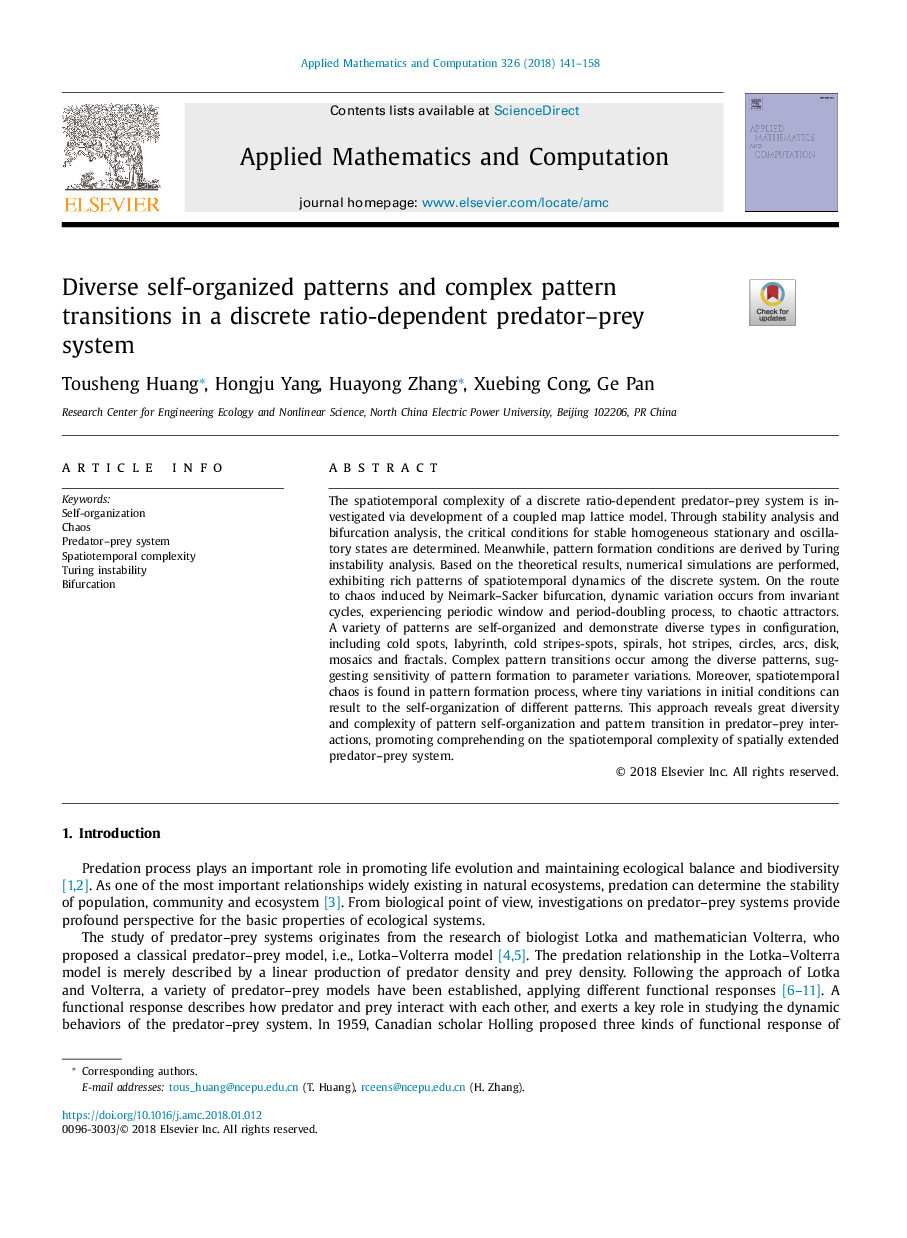| Article ID | Journal | Published Year | Pages | File Type |
|---|---|---|---|---|
| 8901142 | Applied Mathematics and Computation | 2018 | 18 Pages |
Abstract
The spatiotemporal complexity of a discrete ratio-dependent predator-prey system is investigated via development of a coupled map lattice model. Through stability analysis and bifurcation analysis, the critical conditions for stable homogeneous stationary and oscillatory states are determined. Meanwhile, pattern formation conditions are derived by Turing instability analysis. Based on the theoretical results, numerical simulations are performed, exhibiting rich patterns of spatiotemporal dynamics of the discrete system. On the route to chaos induced by Neimark-Sacker bifurcation, dynamic variation occurs from invariant cycles, experiencing periodic window and period-doubling process, to chaotic attractors. A variety of patterns are self-organized and demonstrate diverse types in configuration, including cold spots, labyrinth, cold stripes-spots, spirals, hot stripes, circles, arcs, disk, mosaics and fractals. Complex pattern transitions occur among the diverse patterns, suggesting sensitivity of pattern formation to parameter variations. Moreover, spatiotemporal chaos is found in pattern formation process, where tiny variations in initial conditions can result to the self-organization of different patterns. This approach reveals great diversity and complexity of pattern self-organization and pattern transition in predator-prey interactions, promoting comprehending on the spatiotemporal complexity of spatially extended predator-prey system.
Keywords
Related Topics
Physical Sciences and Engineering
Mathematics
Applied Mathematics
Authors
Huang Tousheng, Yang Hongju, Zhang Huayong, Cong Xuebing, Pan Ge,
